Asana
Asana is a web and mobile project management application developed to help teams organize and track work. It’s geared towards people who manage multiple projects at once, and includes task management, notifications, a customer portal, collaboration tools, task assigning and basic reporting.
Asana’s mobile apps are available for both iOS and Android. The software can be integrated with a variety of third-party applications such as Sunrise, Dropbox, Slack, Box, Google Drive and Hipchat.
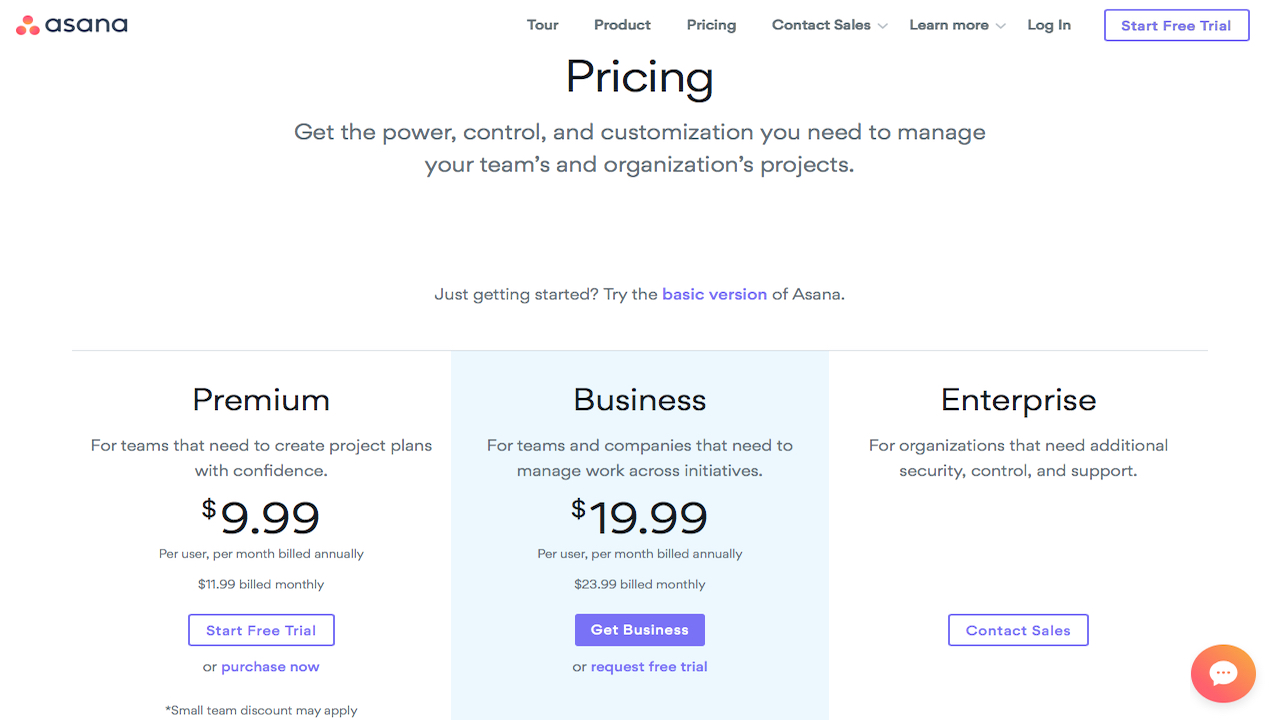
Pricing
Asana has four price tiers. The ‘Basic’ tier is free and as the name suggests offers the basic project management tools. These include viewing projects, assignees and due dates, calendar view and status updates.
The ‘Premium’ tier is $11.99 (£9.40) per month, and there’s also a 30-day free trial. This plan includes all the ‘Basic’ tier has to offer plus timeline, advanced reporting, custom fields, task dependencies, premium content in the Asana Academy, private teams and projects.
The ‘Business’ plan is $23.99 (£18.78) monthly (you can request a 30-day free trial). It includes all the features of the ‘Premium’ plan along with portfolio, lock custom fields, resource management and the ability to build an onboarding plan with the customer service team.
The ‘Enterprise’ package offers extras such as SAML, custom branding, data export, user provisioning, data deletion, priority customer support and more. Potential subscribers need to contact the sales team directly for a quote.
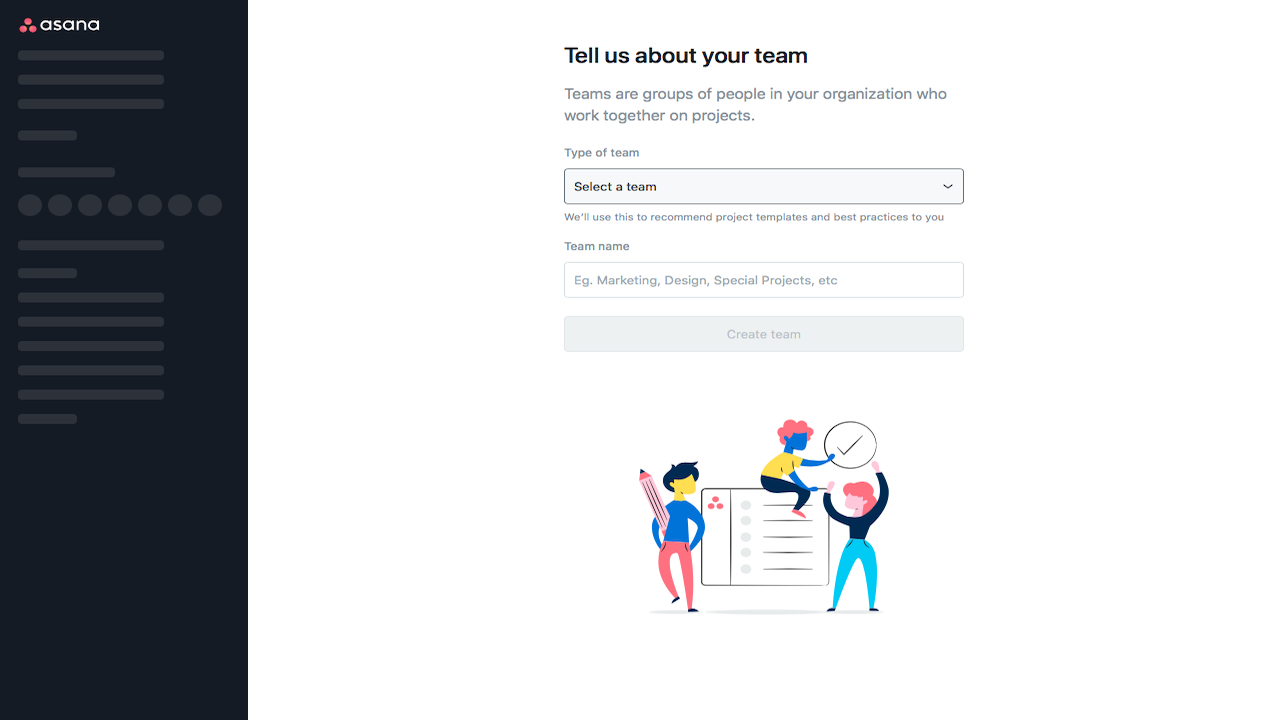
Setup
Setup is fairly straightforward and takes only a few minutes. Just enter your email address and Asana will walk you through the rest of the process. You will be asked to enter your payment details even if you are only accessing the 30-day free trial.
Following that, you’re asked to enter more information about your project. Once all this has been completed, the main dashboard is displayed. You can manage your profile from the top right-hand side of the screen.
Users are able to name their workspace, view/add members, access billing and more, with advanced settings available. Asana works with Harvest time-tracking and this can be enabled through the aforementioned advanced section of workspace settings.
You can edit your profile, email notifications, email forwarding, account, display, apps and hacks via profile settings. You can enable color blind mode here, as well, similar to Trello.
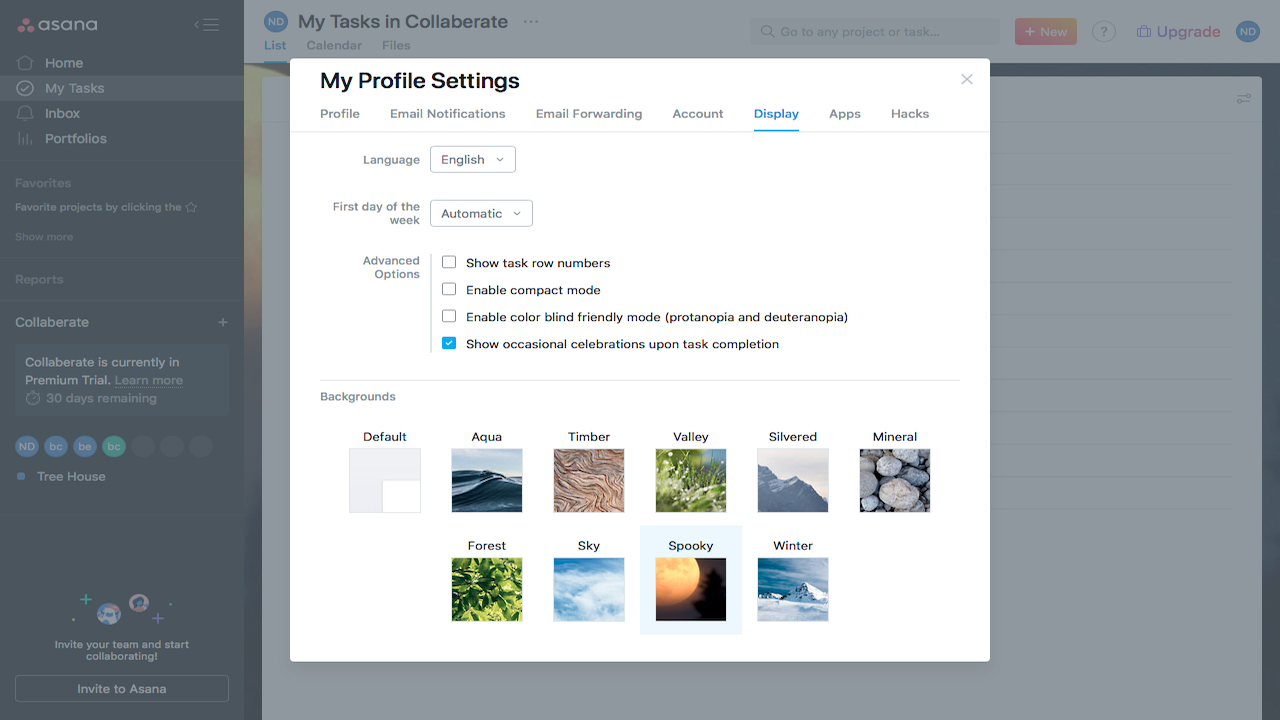
Interface
The interface is relatively simple to navigate. You can access Home, My Tasks, Inbox and Portfolios (the latter is only available to ‘Business’ plan subscribers) from the left-hand side of the screen. You can also view your favorite projects, reports, current projects and team members.
Users can upgrade and add more people to their subscription from the top-right of the screen. The interface can also be customized, and there are several different backgrounds.
Language settings can be changed from here. Asana is available in German, French, Spanish and Portuguese. Japanese is currently in beta testing.
Asana isn’t as visually enticing as other project management platforms such as Zoho Projects, but it’s still easy to use. You are not overwhelmed by the sheer number of dashboard options.
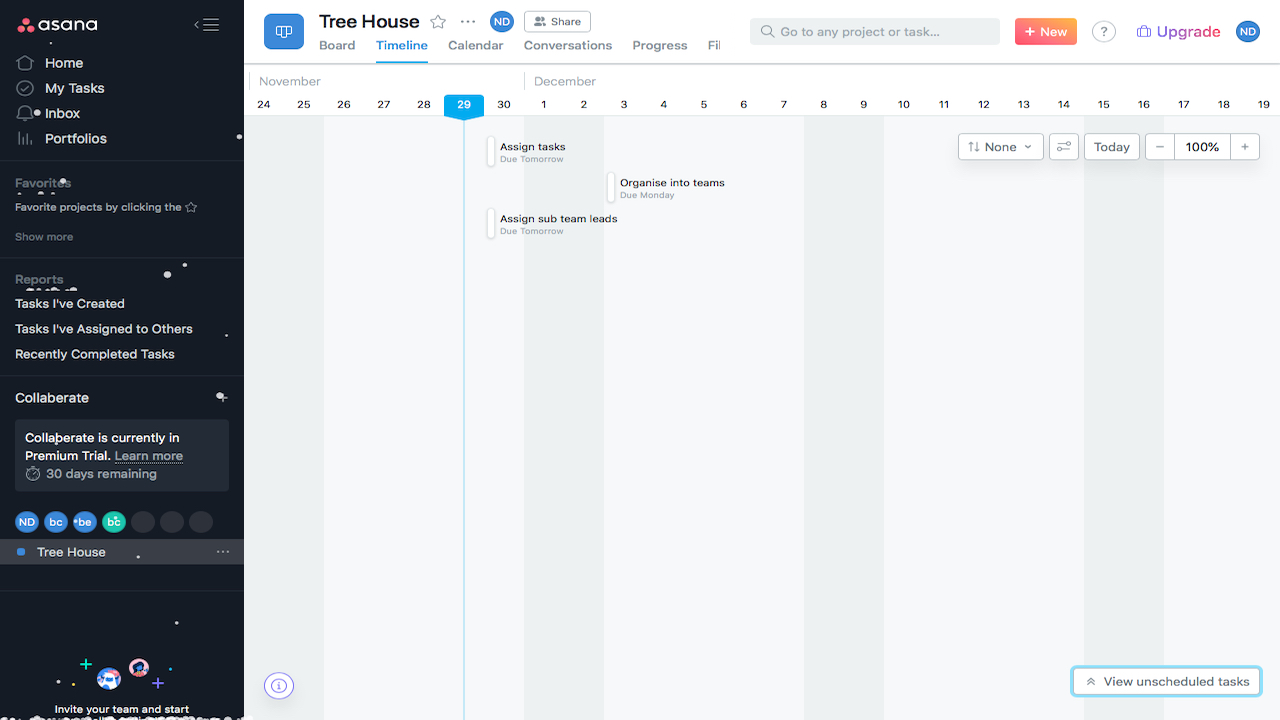
Features
Asana is very intuitive and it offers a number of options that can make your project management interesting. The board feature works similarly to Trello where you set up columns and list various tasks in sticky note format.
Users can set due dates for certain assignments to be completed, add notes, tags and assign tasks to team members. This can be done in any order but this lack of structure can be a bit confusing during initial setup. However, once you get used to this way of doing things, it won’t be an issue.
The Timeline feature, which is not available in the ‘Basic’ tier, shows how all of your work slots together. It links all due dates, tasks and team members. The Timeline is very similar to a Gantt chart as it displays all of your work in one place, and is live. As a result, it’s always up to date.
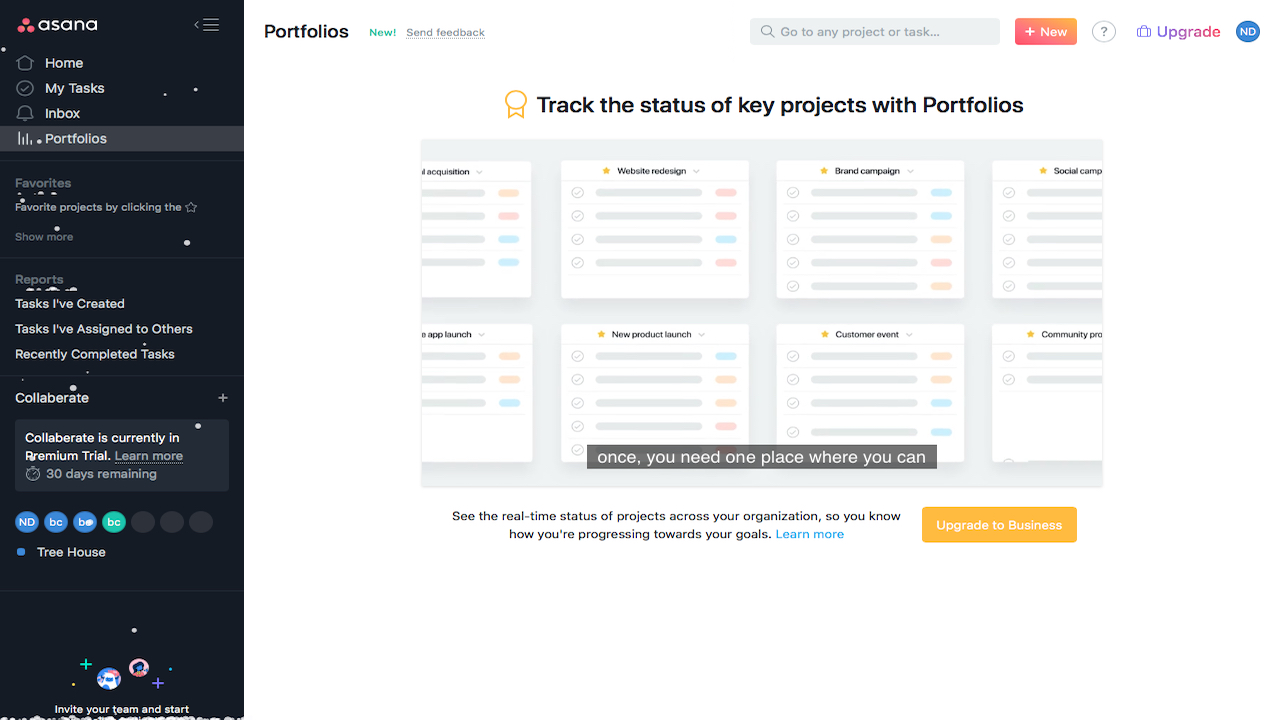
Portfolios are a new feature to Asana and are only available to those on the ‘Business’ plan. They can be used to keep track of all your projects and teams in one place, providing a handy overview of everything for managers.
You can create a portfolio easily – it’s simply a matter of selecting the projects you want to add. These portfolios are easily shared with others by copying their URL, too.
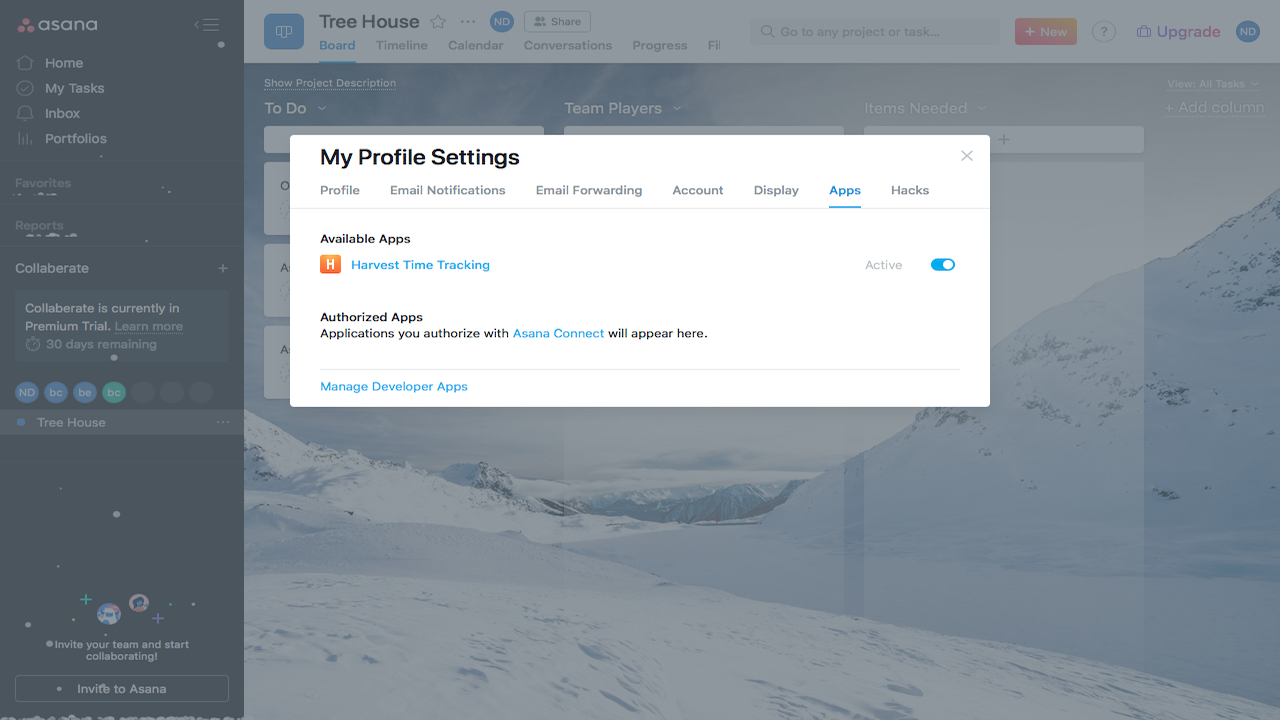
As we already mentioned, Asana integrates with Harvest time-tracking, which allows you to track time and budgets. To get started, you need to activate and register an account with Harvest from your profile settings at the top right-hand side of the page. It’s free for one person and up to two projects. The ‘Solo’ tier is $12 (£9.40) per month for one person to have unlimited projects. The ‘Team’ plan is $12 (£9.40) per person per month with unlimited projects. There is a 30-day free trial available, too.
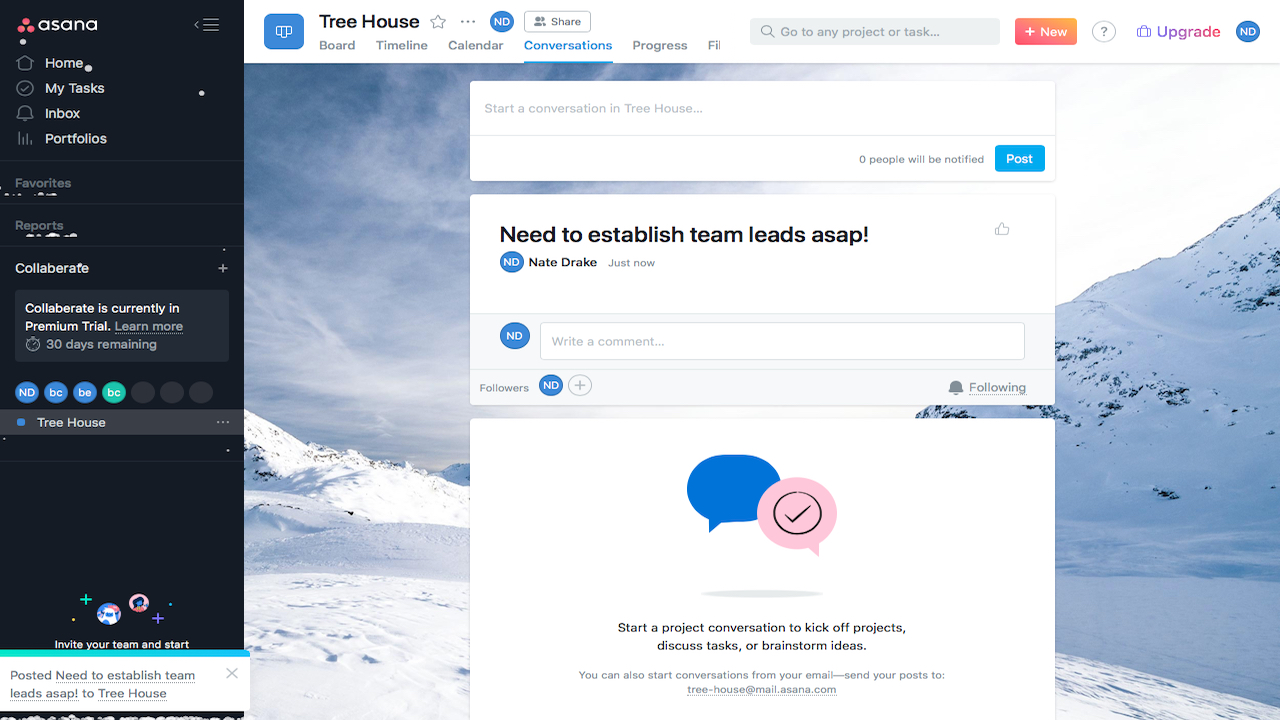
Asana doesn’t offer a live chat feature. However, it does integrate with Slack and Microsoft Teams. Users can also use Conversations – this is a message board designed for team members to discuss issues concerning all projects. It doesn’t include direct messaging to other team members.
Asana has mobile applications for both iOS and Android. While these are slightly different to the web interface, they still have all the same core features. Most of the tabs that are on the left in the web-based version can be found on the right-hand side in the mobile app.
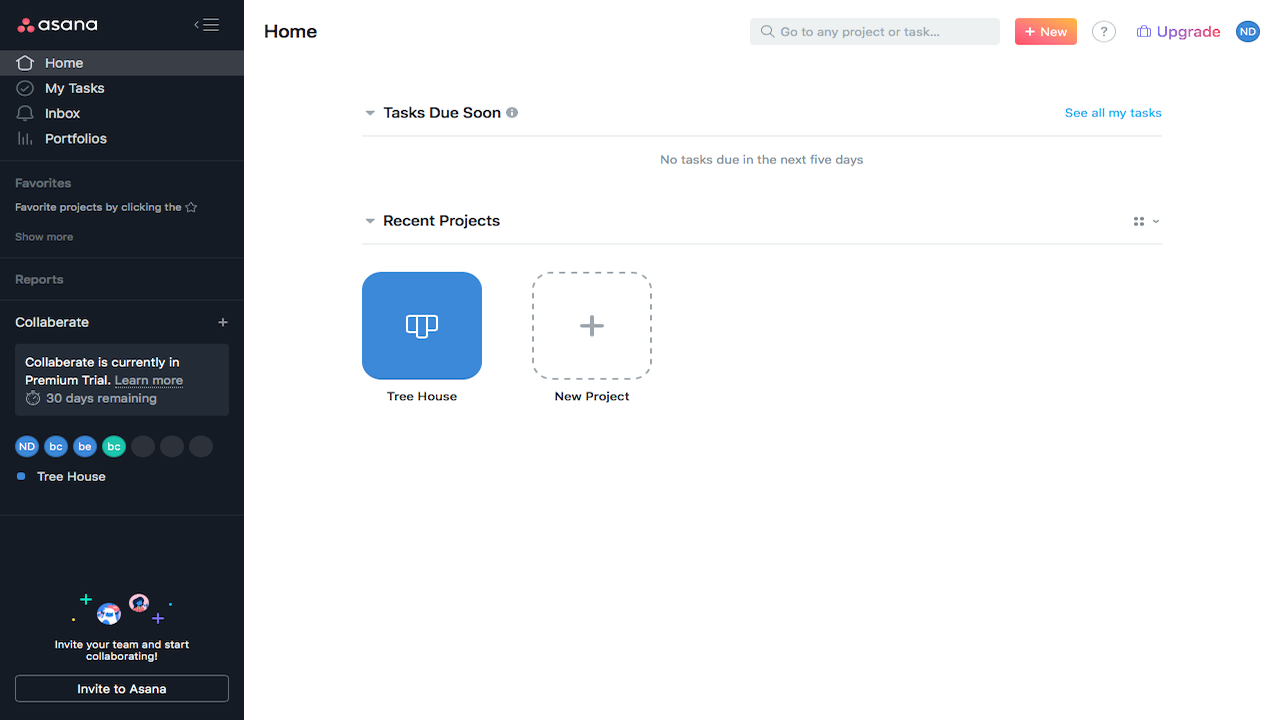
Final verdict
Asana benefits from an intuitive and interactive design. It’s perfectly suited for smaller projects and teamwork. Some folks may find it takes some getting used to as it can seem to lack structure compared to other project management tools. However, once you have got over the learning curve, it works beautifully as a task management app.
It is a bit light on the more in-depth aspects of project management, but it works perfectly well for managing workflow. Asana doesn’t have its own time-tracking feature, and while Harvest integrates perfectly, it could end up costing you more – depending on the size of your team – compared to other project management apps with a bundled time-tracking feature such as Liquid Planner.
Asana’s reporting features are also fairly basic and may not meet some teams’ needs. However, the generous free tier alone makes it worthwhile sampling this service.
- We've also highlighted the best project management software
0 comments:
Post a Comment